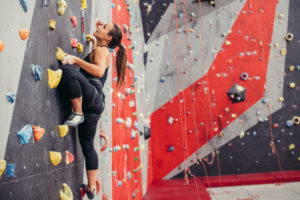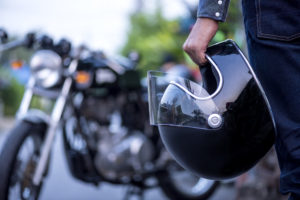Many people love to decorate for the holidays, a huge percentage with indoor and outdoor lighting, but there are many dangers for the unwary. The National Fire Protection Association (NFPA) has compiled statistics that indicate an average of 160 structure fires result from holiday lighting failures annually. On average, those fires result in 9 non-firefighter deaths, 13 non-firefighter injuries, and approximately 9 million dollars in property damages losses. Most of the fires result from electrical lighting failures, but home candle fires still account for 12% of the deaths and losses. Accordingly, the Electrical Safety Foundation International (ESFi) has compiled the following list of safety tips:
- Unlike incandescent bulbs which generate most of their energy in heat, LEDs are cool to the touch—which also indicates greater energy-efficiency.
- LEDs are made with epoxy lenses, not glass and are much more durable.
- When hanging lights outdoors, use a wooden or fiberglass ladder.
- Turn off all indoor and outdoor holiday lighting before leaving the house or going to bed.
- Never drape anything over a light bulb or lamp shade.
- Avoid using candles when possible. Consider using battery-operated candles in place of traditional candles.
- Never leave an open flame unattended. Keep burning candles within sight.
- Extinguish all candles before you leave the room or go to bed.
- Place lighted candles away from combustible material and areas where they might be knocked over.
- Never use lighted candles on a tree or near other evergreens.
- Keep candles away from other decorations and wrapping paper. Do not burn wrapping paper as a means of disposal.
The ESFi also offers the following tips when it comes to buying those indoor and outdoor electric holiday decorations that will create just the holiday atmosphere you are looking for:
Purchasing Tips
- Always buy electrical equipment that displays a label indicating it has undergone independent testing by a nationally recognized testing laboratory such as Underwriters Laboratories (UL), Intertek (ETL), or Canadian Standards Association (CSA).
- Only make purchases from trusted retailers to avoid the risk of purchasing counterfeit products.
- Be sure to buy decorations according to your intended use outdoors or indoors.
- Send warranty and product registration forms to manufacturers in order to be notified promptly in the event of a product recall.
Artificial vs. Natural Trees
- When buying a natural tree look for a well-hydrated one with vibrant green needles that are hard to pluck and don’t break easily from its branches.
- Look for a trunk sticky with sap when purchasing a natural tree.
- For natural trees, be sure your tree stand holds plenty of water so you can keep it hydrated.
- According to the American Christmas Tree Association, artificial trees cost 70% less over 10 years.
- If you use an artificial tree, choose one that is tested and labeled as fire resistant.
Light-Emitting Diode (LED) vs. Incandescent Holiday Lights
- LED lights last up to 20 times longer than traditional incandescent lights.
- LEDs generate less heat—which translates into greater energy-efficiency.
- LEDs are made with epoxy lenses, not glass and are much more durable.
- LEDs are initially more expensive, but will recover some of the cost through energy savings.
- Incandescent holiday lights burn more brightly than LEDs.
The holidays can be a magical time to relax and enjoy the festivities of the season, but only if there is a little safety planning involved to avoid the dangers of the unexpected fire disaster.
“ChristmasMarketJena” by ReneS at flickr – http://www.flickr.com/photos/rene-germany/2126809489/?addedcomment=1#comment72157611118374576. Licensed under CC BY-SA 2.0 via Wikimedia Commons.

Bret Hanna of Wrona DuBois in Utah, focuses exclusively on litigating plaintiffs’ medical malpractice and catastrophic personal injury cases. He has represented clients in state and federal courts, in mediations, and in administrative proceedings in Michigan and Utah since 1991.










Comments for this article are closed.